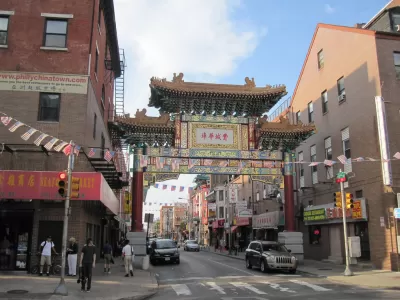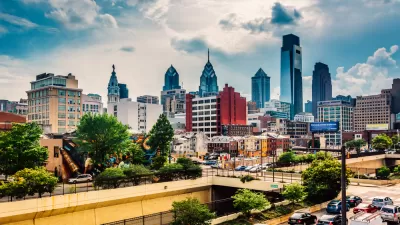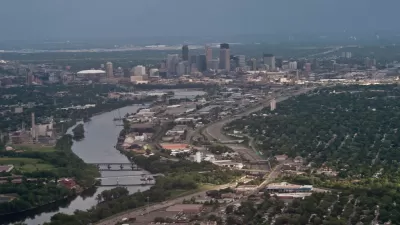As the historic neighborhood experiences increased redevelopment around the new Rail Park, community activists are working to ensure older residents and businesses aren't displaced in the process.

Philadelphia's Chinatown is changing—but residents hope the development boom in the area won't drive out long-term Chinese-owned businesses in the area, reports Sophia Schmidt.
A 2020 study prepared by the consulting firms Strategic Economics and Urban Partners for the Chinatown CDC found that since Friends of the Rail Park — the polished nonprofit that continues to raise money to make the 3-mile park vision a reality — formed in 2013, sale prices of apartment buildings near the first phase of the park grew faster than in the rest of the city. The authors estimated up to 16% of this increase may be attributable to the Rail Park, and projected the amenity could generate more than $2 million in additional real estate tax revenue for the city per year.
Yue Wu, neighborhood planning and project manager at the Philadelphia Chinatown Development Corporation, acknowledges the economic and cultural diversity currently present in the neighborhood, but expresses fears that it won't last as costs rise and older residents are displaced. According to the article, "Friends of the Rail Park has tried to counter the cultural displacement that can come with gentrification by co-hosting events like Mahjong nights, plant swaps, elder hour — geared toward low-income and low-English language proficiency seniors — said Friends of the Rail Park Director Rebecca Cordes Chan." The organization is also launching a planning process that will evaluate the equity impacts of new development and develop ways to prevent potential displacement. Ideas include a land trust, local procurement, and 'value capture strategies.'
Planetizen has previously covered one such strategy, tax increment financing (TIF) districts, a mechanism which, as CityLab explained, "has become the most popular incentive tool for economic development in the United States as the federal government has decreased its urban development spending." Philadelphia already boasts several examples of TIFs, but "None of the TIF districts created to date in Philadelphia have funded community benefits, according to the 2020 Strategic Economics report."
FULL STORY: ‘Who’s Benefiting?’ As Chinatown Gentrifies, Rail Park Begins Equitable Development Plan

Maui's Vacation Rental Debate Turns Ugly
Verbal attacks, misinformation campaigns and fistfights plague a high-stakes debate to convert thousands of vacation rentals into long-term housing.

Planetizen Federal Action Tracker
A weekly monitor of how Trump’s orders and actions are impacting planners and planning in America.

In Urban Planning, AI Prompting Could be the New Design Thinking
Creativity has long been key to great urban design. What if we see AI as our new creative partner?

San Francisco Mayor Backtracks on Homelessness Goal
Mayor Dan Lurie ran on a promise to build 1,500 additional shelter beds in the city, complete with supportive services. Now, his office says they are “shifting strategy” to focus on prevention and mental health treatment.

How Trump's HUD Budget Proposal Would Harm Homelessness Response
Experts say the change to the HUD budget would make it more difficult to identify people who are homeless and connect them with services, and to prevent homelessness.

The Vast Potential of the Right-of-Way
One writer argues that the space between two building faces is the most important element of the built environment.
Urban Design for Planners 1: Software Tools
This six-course series explores essential urban design concepts using open source software and equips planners with the tools they need to participate fully in the urban design process.
Planning for Universal Design
Learn the tools for implementing Universal Design in planning regulations.
Gallatin County Department of Planning & Community Development
Heyer Gruel & Associates PA
JM Goldson LLC
Mpact (founded as Rail~Volution)
City of Camden Redevelopment Agency
City of Astoria
Jefferson Parish Government
Camden Redevelopment Agency
City of Claremont





























